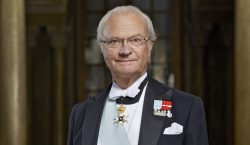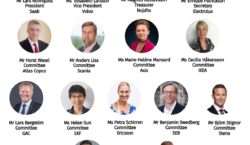Covering three cities in Indonesia – Jakarta, Bogor and Bandung – the first State Visit to Indonesia by the King Carl XVI Gustaf and Queen Silvia of Sweden took place on 22-24 May 2017.
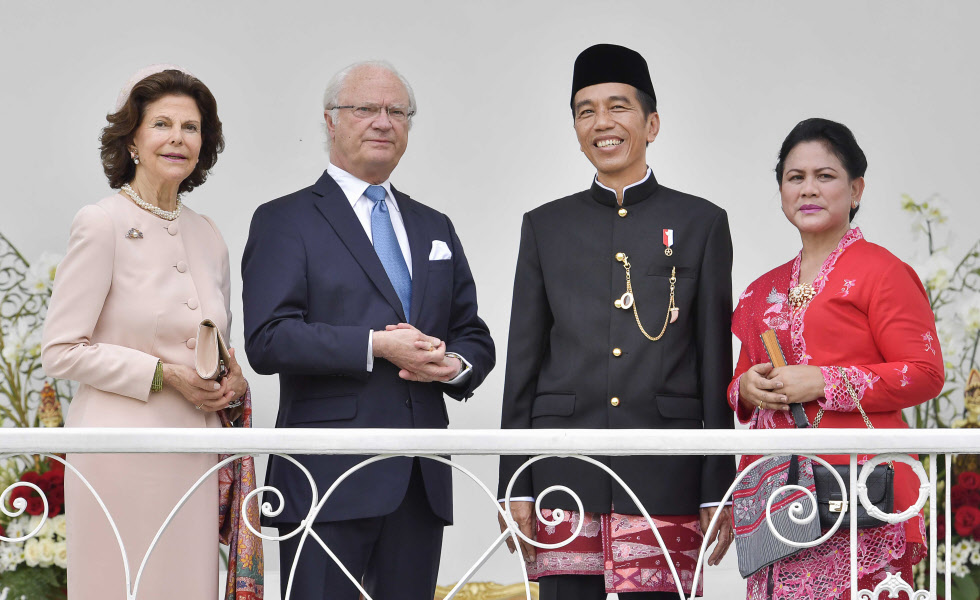
The visit was expected to enrich and deepen the bilateral relations between Indonesia and Sweden. The Swedish government was be represented by the Swedish Minister for Infrastructure Ms Anna Johansson. The Minister of Foreign Affairs Margot Wallström, however, was forced to cancel and replacement was not sent, the ministry informed ScandAsia. A business delegation, delegation headed by the CEO of Business Sweden Ylva Berg, comprised of 31 companies with an annual turnover of 330 billion US dollars, and representing the corporate elite of Sweden, joined the King and the Queen.
“Sweden and Indonesia enjoy close and good relations. This State Visit, the first of its kind between our two countries, by the King Carl XVI Gustaf and Queen Silvia, is a testament to our relations and stepping stone for an enhanced and deepened cooperation,” said Ambassador of Sweden to Indonesia H.E. Johanna Brismar Skoog.
His Majesty and President Jokowi witnessed the signing of the MoU about visa-free facility agreement for diplomatic and official passport holders by Swedish Minister for Infrastructure Anna Johansson and Indonesian Minister for Foreign Affairs Ibu Retno Marsudi. Two other MoUs were also signed during this visit.
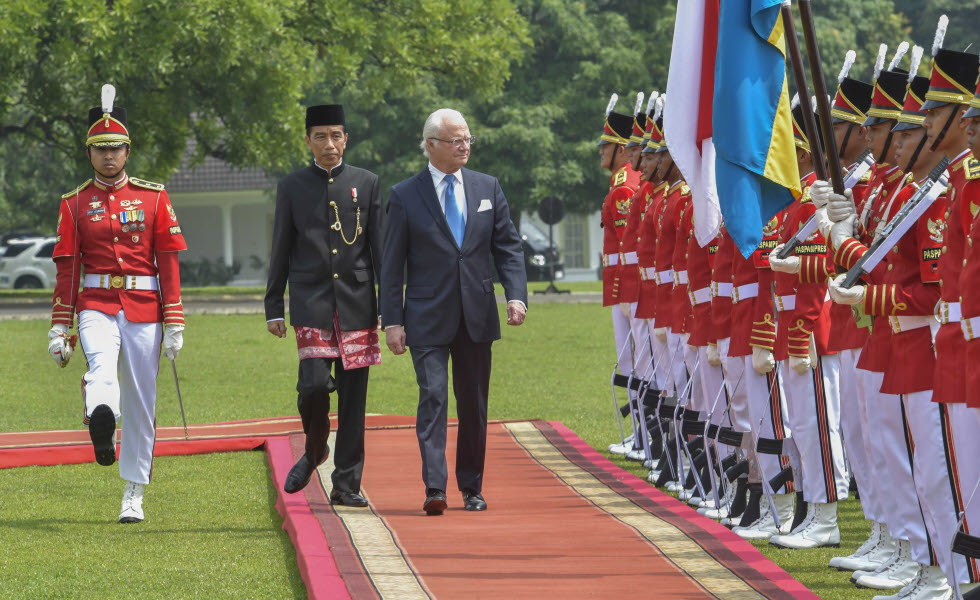
During the visit, the King and Queen were involved in different programmes following the Swedish model of Triple Helix (Cooperation within the Government, Authorities, Universities and Industry) for the promotion of research and innovation.
22 May
Their Majesties King Carl XVI Gustaf and Queen Silvia of Sweden started the State Visit to Indonesia in Bogor, where the royals were received at the Istana Bogor Palace by President Joko Widodo and his wife Iriana, and as part of the ceremony, the Royal and Presidential couples walked past the replica of The Hand of God, made by Swedish sculptor Carl Milles and a gift in 1957 from the Swedish to the Indonesian Government.
Istana Bogor, the Bogor Palace, is one of six presidential palaces in Indonesia. The palace was built in 1745 and has since its inauguration been used both as a summer residence and as a main residence by both governor generals and presidents. The current presidential couple live in the palace.
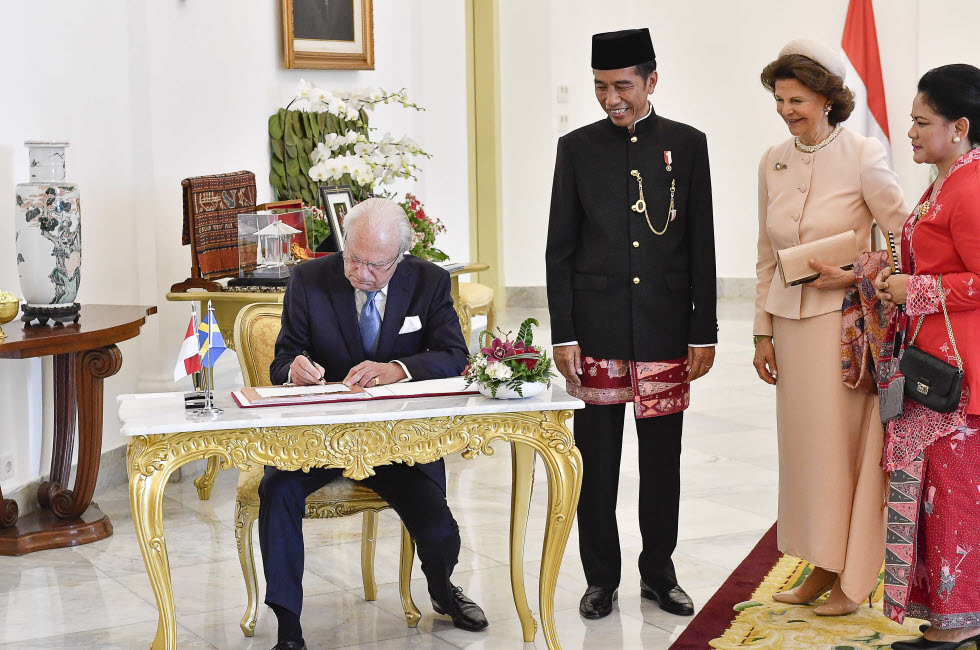
After national anthems, a salute and inspection of the Presidential Security Force, the official delegation was introduced.
The King and President then had a separate meeting before participating in the bilateral meeting between the Swedish and Indonesian delegations. The topics of discussion included trade and sustainability.
After the meeting, The King and the Indonesian President both made statements to the media. The King spoke about the state visit as an expression of commitment to strengthening cooperation between countries and the joint interest in promoting exchange in education and research.
After the reception ceremony, a state banquet was held in the palace, where King Carl XVI Gustaf said: “It is with great pleasure that The Queen and I have begun our visit to Indonesia. This is a historic State Visit, the very first between our two nations. Over the coming days, I hope that we will lay the foundations for even stronger relations for many years to come.”
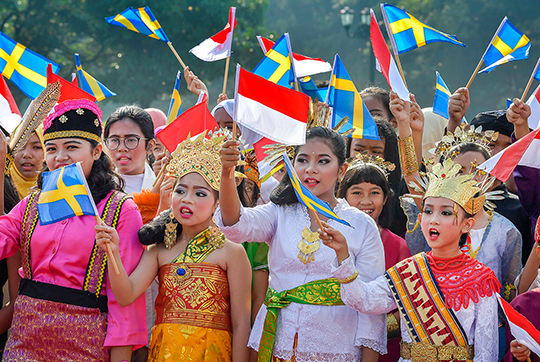
”Indonesia and Sweden enjoy excellent bilateral relations. Our diplomatic links date back to 1950. Almost exactly four years ago, in May 2013, the former President of Indonesia visited Sweden. And it is pleasing to note that in recent years we have seen an increase in the number of ministerial-level visits in both directions.”
The King continued: “Our two countries differ in many ways. And yet we have a great deal in common.
“Swedish businesses have a long history in Indonesia. Today, Swedish companies here employ about 200,000 people. And back at home, in Sweden, we have the privilege of welcoming a small but growing number of Indonesian students to our universities.
“Indonesia and Sweden share a real sense of curiosity for new technology. Social media have been adopted quickly and broadly by the people of both countries.
“We are also both significant forestry nations. Forests cover much of the surface of both our countries and are remarkable sources of development and prosperity. But they also present us with a number of challenges. Like all renewable resources, forests must be managed in a wise and sustainable way.”
The Swedish King was delighted that the President shared his strong interest in sustainable forestry, and in preserving and developing forest diversity issues that are particularly close to His Royal Highness’ (HRH) heart.
“Another important and rapidly growing area of cooperation is education and research. This is mutually beneficial to the futures of both our countries. It also creates long-term personal links between individuals from Indonesia and Sweden.”
HRH also highlighted Indonesia’s currently far-reaching developments in fields such as infrastructure and energy – fields in which Swedish companies are world leaders when it comes to sustainable and innovative solutions.
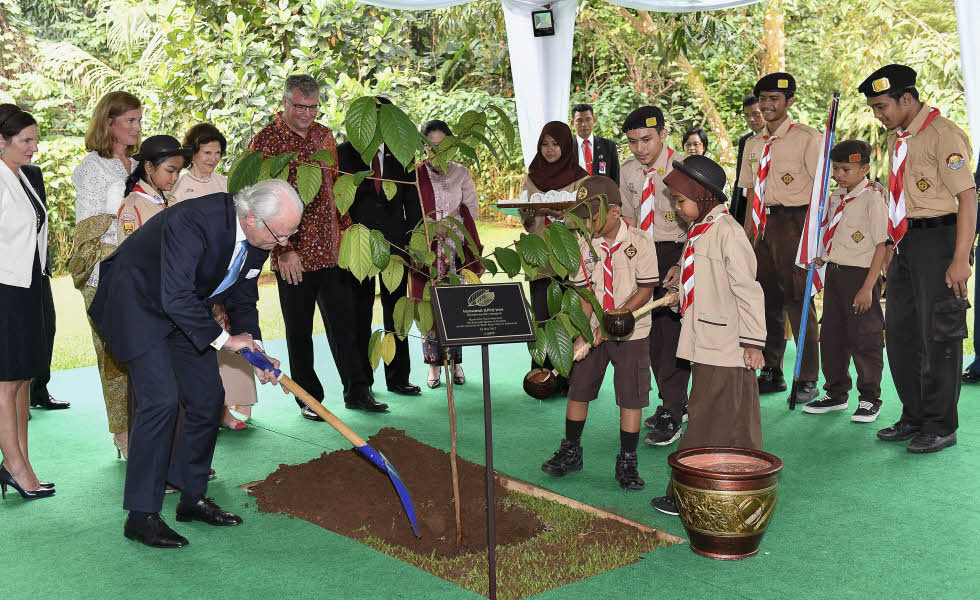
The Swedish King also mentioned a recent visit to Indonesia in 2012, when the King in his capacity as Honorary Chairman of the World Scout Foundation celebrated the centenary of the Indonesian Scout association, Gerakan Pramuka. HRH highlighted the fact that Indonesia has the world’s largest Scout association with around 22 million members – “quite an impressive figure!”
King Carl XVI Gustaf said that this visit had left a lasting impression on him. He had learned how Indonesian Scouts had worked to repair and rebuild what had been destroyed by the terrible earthquake and tsunami that hit Indonesia in December 2004.
In the afternoon, the King and Queen, along with Swedish and Indonesian government representatives and industry representatives, participated in a seminar about forests and sustainability at the International Center for Forestry Research, CIFOR, where the Royal Couple was welcomed by CIFOR’s Swedish Director-General Peter Holmgren.
During the seminar the King got to discuss sustainable forestry, and experiences and views on sustainable forestry were exchanged between Swedish and Indonesian actors from academia, industry and the public sector.
CIFOR (a non-profit scientific institution that conducts research on the most pressing challenges of forest and landscape management around the world) primarily works with forest preservation and forest management, and strives to strengthen relations with politicians and companies in order to promote a more sustainable society. Sweden is one of the institution’s four founding members.
The evening concluded with a reception at the Swedish Embassy for Swedes living in Indonesia.
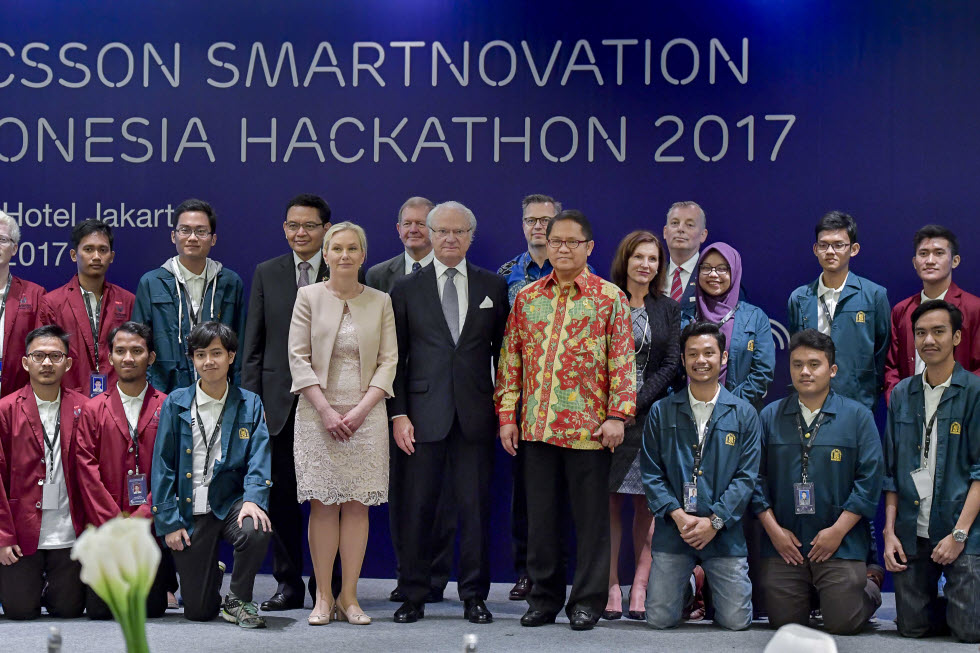
23 May
Part of the second day’s programme in Jakarta the Swedish King participated in the conclusion of a hackathon, which is a way of generating ideas and solutions to problems. Such meetings have been arranged in Jakarta on several occasions to create innovations.
This time, students from four leading Indonesian universities were divided up into eight teams, and spent 24 hours developing concepts on the theme of Jakarta as a smart city to improve the city’s traffic situation. After 24 hours, the students presented working demos. The King attended the presentations, together with Sweden’s Minister for Infrastructure Anna Johansson, representatives from Ericsson and other companies, and representatives from the Indonesian Government.
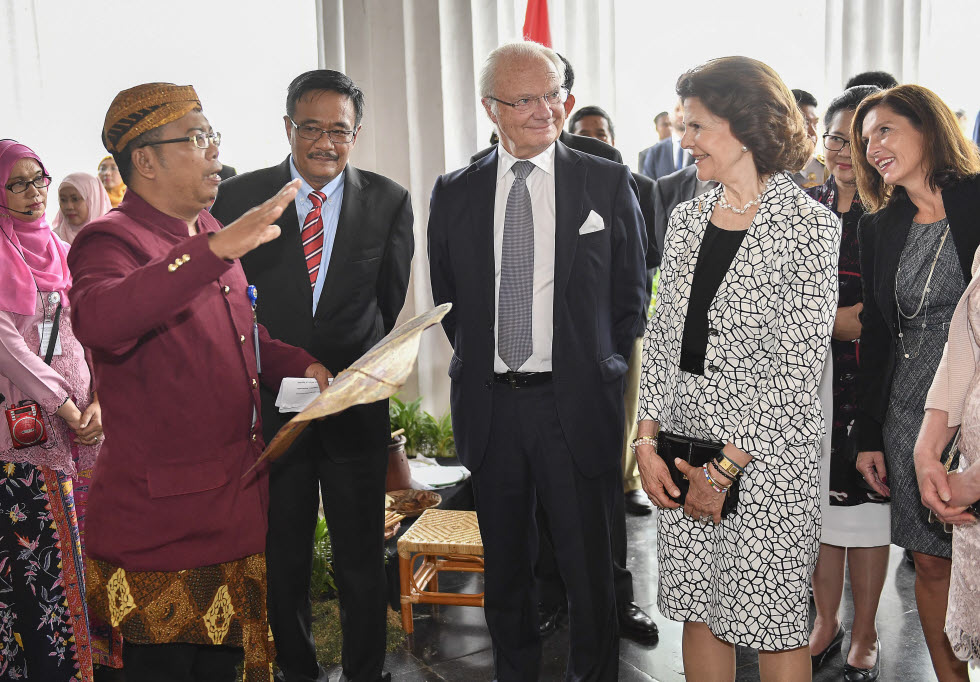
The Queen, meanwhile, visited Jakarta Creative Hub (launched on 1 March 2017), and is intended to be a meeting place for creators who want to try out new ideas and concepts within design, textiles and fashion. The premises also provide space for start-up companies, charging zero or very low rent. Indonesia is one of the world’s largest producer nations for the textile and fashion industry.
The Queen had the opportunity to meet young apprentices and creators, and to find out more about Creative Hub’s various areas of operation. There then followed a seminar which highlighted young designers, entrepreneurship, internationalisation and innovation.
The King and Queen then visited Jakarta’s old town, Kota Tua, for lunch and to gain an insight into the city’s history. At Fatahillah Square, they were shown displays of batik and wayang (Indonesian puppet theatre) and also meet with the Volvo Club of Indonesia.
During the afternoon, the King, ministers and business leaders from both countries took part in the Indonesia-Sweden Executive Forum (ISEF). Digitisation, infrastructure and quality of life were topics for discussion at ISEF, which aimed to create a platform for continued cooperation and to strengthen relationships between Indonesian and Swedish businesses and institutions.
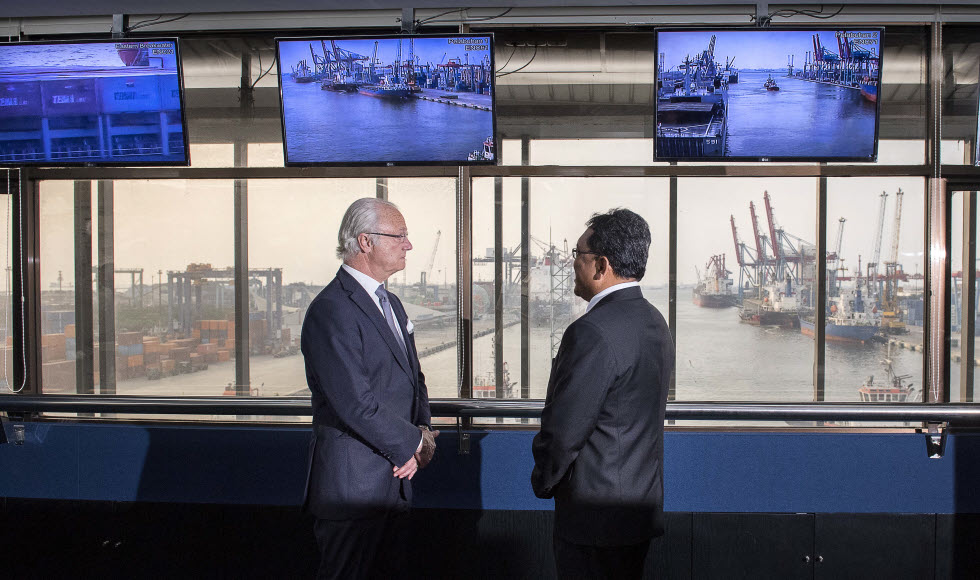
After the forum, The King and Sweden’s Minister for Infrastructure Anna Johansson visited Jakarta’s main port, Tanjung Priok, which is located in the northeast part of Jakarta. The port is operated by the Indonesian Port Cooperation (IPC), which also hosted the visit.
The delegation was given an insight into Indonesia as a seafaring and trading nation, and saw how Swedish technological solutions are used to ensure that ships navigate into and out of the port effectively. The Vessel Traffic Management System (VTMIS) supplied by Saab for IPC is one example.
The Queen’s separate programme included partaking in a round-table discussion with decision-makers from Indonesia and Sweden, youth representatives and representatives from interest groups. The subject for discussion was how both countries can work to prevent violence against children.
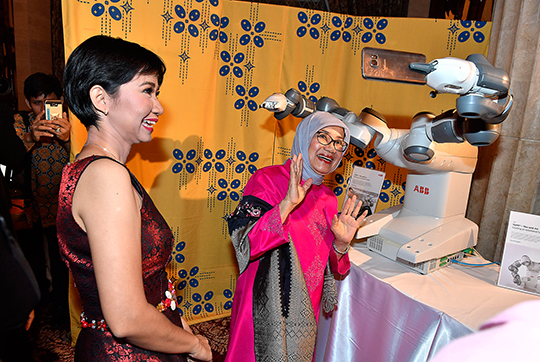
Both Indonesia and Sweden are leading the way within the global cooperation in connection with Agenda 2030 to stop violence against children. The discussion was moderated by UNICEF’s Gunilla Olsson.
The Queen gave a speech, in which she said: “The library in Manggarai is very small. But let me assure you: there is nothing small about the dreams and aspirations of the children and young people that I met there today. It was a most inspiring visit – one that I will remember for a long time. However, it also reminded me of the challenges facing many children today.”
Tuesday concluded with The King and Queen’s reception at the Hotel Indonesia Kempinski. The guests included Swedish and Indonesian government and industry representatives, and representatives from cultural and academic circles.
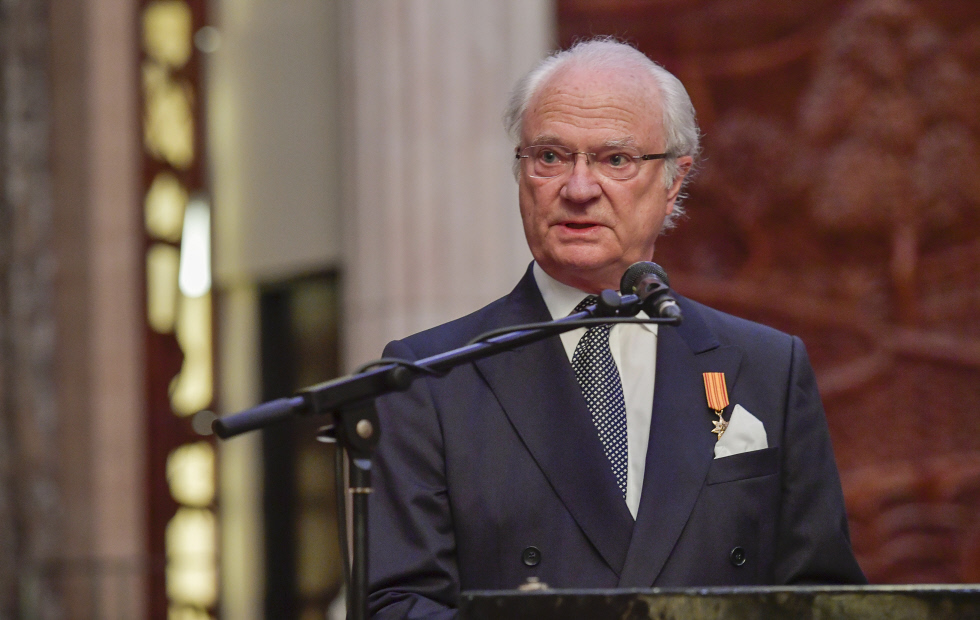
“These first few days of our visit have been most rewarding. We greatly appreciate this opportunity to further strengthen the relations between our two countries,” the Swedish King said in his welcoming speech.
“We have a full schedule during our visit here, with many interesting meetings. To mention just one: earlier today, I had the privilege of meeting a group of talented young people at the Hackathon. Teams of students competed to develop new solutions to improve the traffic situation. The students I met had been working hard for 24 hours – but they were still enthusiastic and full of energy. A most inspiring meeting!
“The Hackathon is a fine example of how collaboration between industry, academia and government can lead to innovation and help us find new solutions to common challenges.
“In connection with tonight’s reception, an exhibition will be displayed, showing Sweden from different perspectives. It focuses on sustainability, innovation and creativity, which are core values for Swedish business and the themes of this visit.”
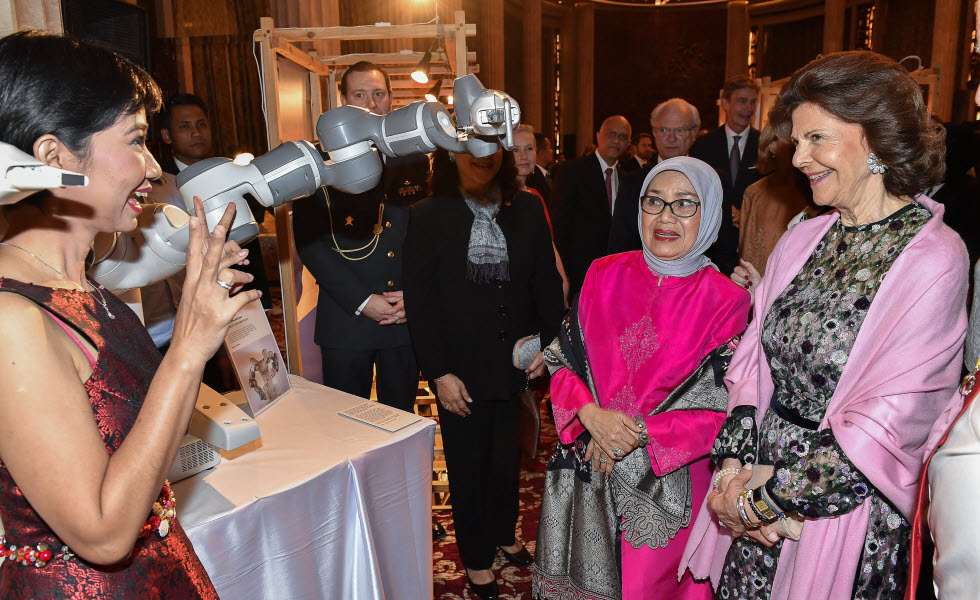
24 May
The King and Queen concluded their state visit to Indonesia on Wednesday 24 May. The day was spent in Bandung, the capital of Indonesia’s most populous province, West Java and second largest urban area with 8.5 million inhabitants. The city is a centre for high technology, research and innovation, and for higher education, fashion and creative industries.
During the train journey from Jakarta to Bandung, The King and Queen and the rest of the delegation were given a presentation about Indonesia’s economic and political outlooks, and issues relating to the environment and climate were also discussed.
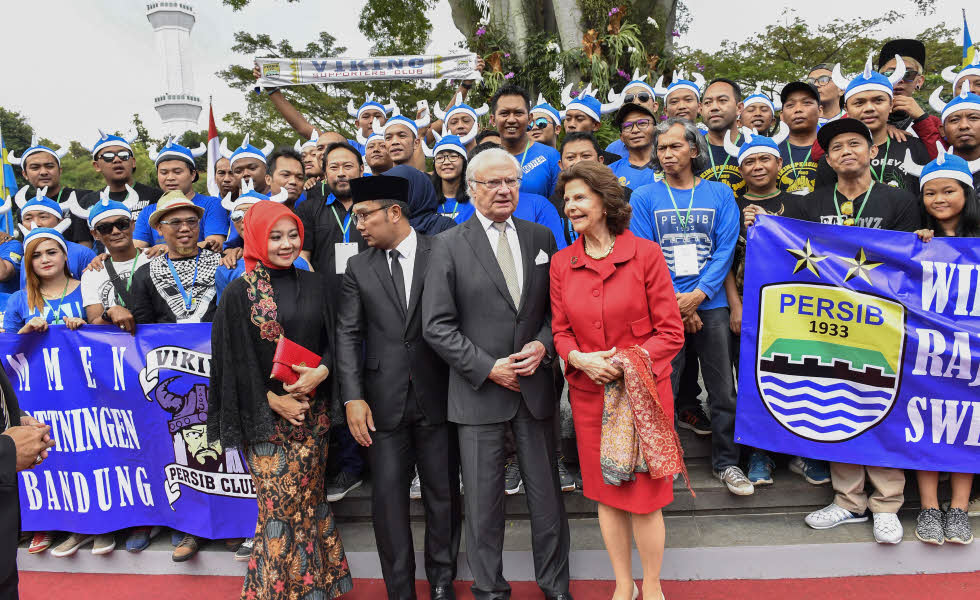
The train passed Java’s famous rice terraces. Terracing rice fields was developed in Indonesia, and has since been adopted in other parts of the world, primarily through active efforts from the UN.
On arrival in Bandung, The King and Queen were welcomed by Mayor Ridwan Kamil, who hosted lunch at the official mayoral residence.
The afternoon continued at the Institute of Technology Bandung (ITB), one of Indonesia’s leading educational institutions. ITB offers technological and scientific programmes, and has more than 20,000 students. ITB’s Rector Prof. Dr. Kadarsah Suryadi welcomed the visitors and presented parts of ITB’s campus.
The King and Queen and Minister Anna Johansson then met representatives from Alumni Swedia, an alumni association for Indonesian students who have studied in Sweden.
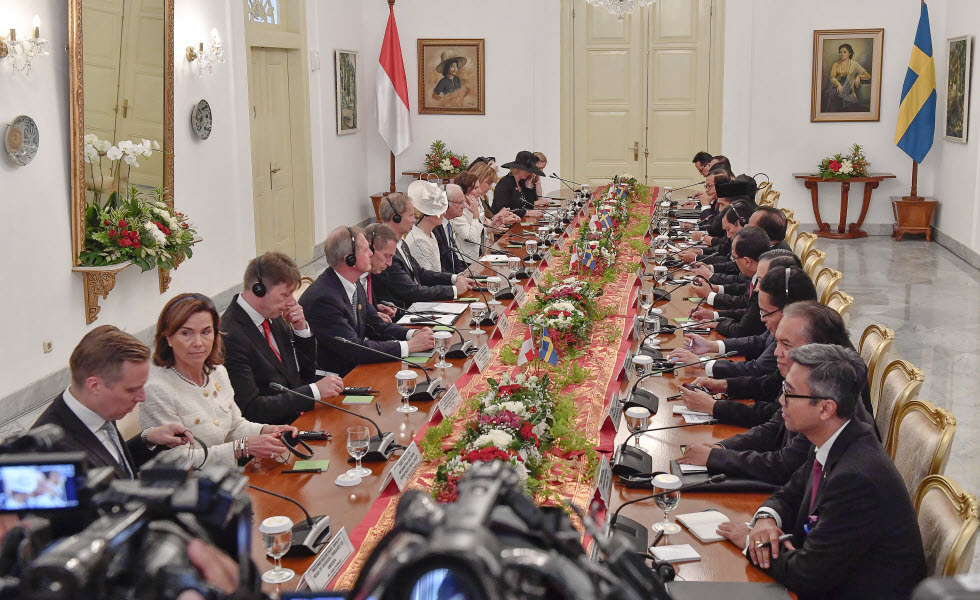
This was followed by a seminar on the Triple Helix model and innovation. There has been significant interest in Indonesia in the Swedish Triple Helix model, which promotes research and innovation. The model involves cooperation between the Government, authorities, academia and industry, and is one of the reasons for Sweden’s position as one of the world’s most innovative nations.
During the seminar, Indonesian and Swedish representatives from academia, the public sector and industry shared experiences and discussed possible deeper future cooperation.
The day in Bandung and the state visit concluded with a press conference.
Sources: Swedish Royal Court, Embassy of Sweden in Jakarta
All Photos: Jonas Ekströmer

